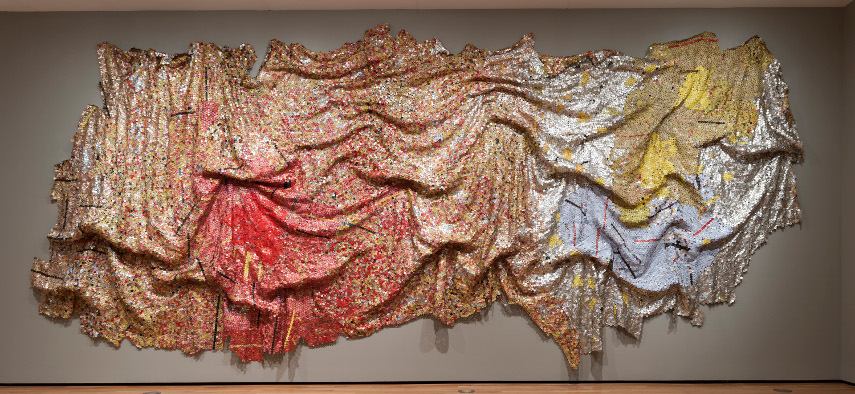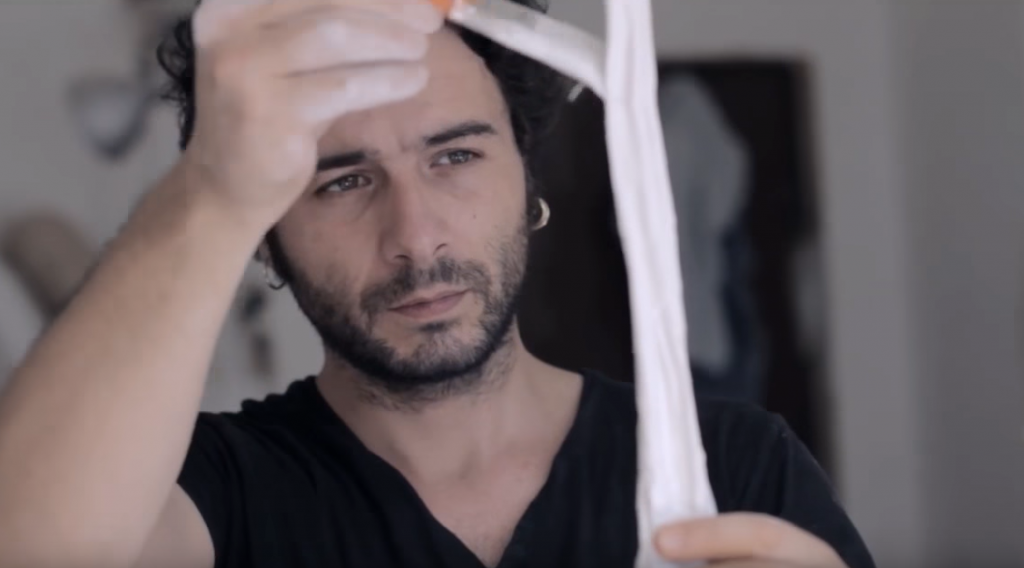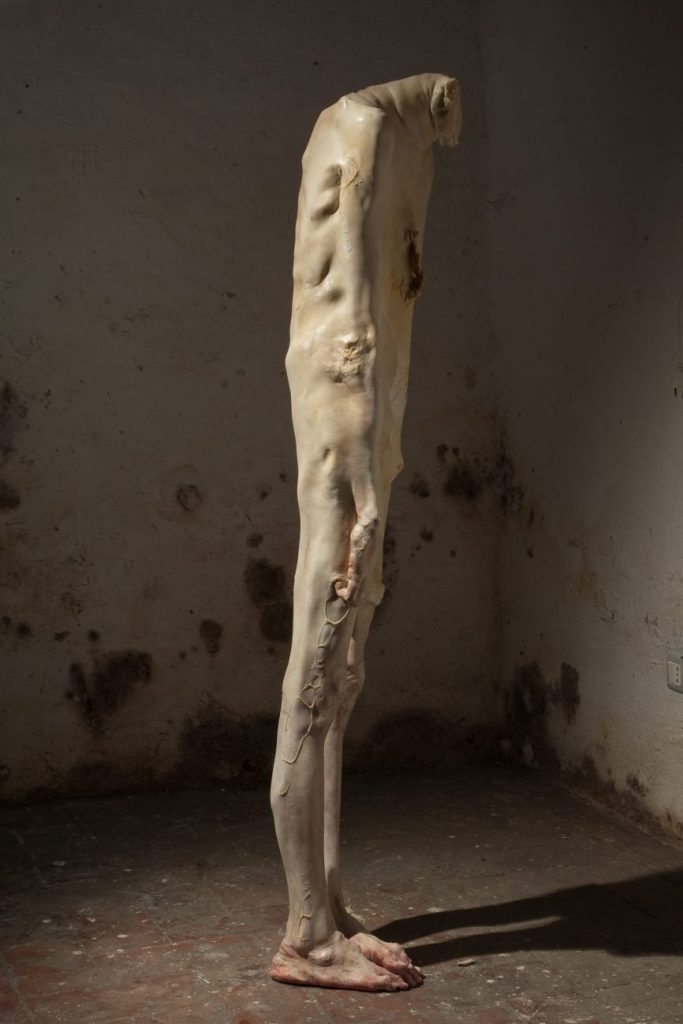
El Anatsui is a contemporary Ghanaian sculpture and painter. Throughout Anatsui’s years, he has used wood, discarded metal, and clay to create unique and elaborated works. He is also known for using bottle caps from liquor bottles to create colorful textures of fabric-like forms for wall hanging that he would refer as “cloths”. He would make his art into a new kind of form with the used materials he finds that would leave the viewer in awe. As a global artist, he focuses in using consumption and colonialism while using historical references of European and African abstraction with the sense of Minimalism.


Anatsui was born in Anyako, Ghana (part of the Volta region) and is the youngest of 32 children in his family while growing up. At an early age, he developed an interest in using variety of materials and medias that highlighted his identity as an artist. In 1968, he graduated from the University of Science and Technology in Kumasi, Ghana to pursue in fine arts with a bachelor’s degree. There, he studied drawing, painting, and sculpture in Western tradition.

Size: 145 5/8 x 441 in (369.9nx 1120.1 cm)
In 1975, Anatsui became a professor of sculpture at the University of Nsukka in Nigera where he taught for 35 years. There at the university, he began to try medium in clay where wood began less available. Recently, he had given up his position as a professor of art at University of Nigeria to concentrate on his studio work. Soon, he begins doing installation art where he woves cloth into patterns of kentecloth that becomes sculpture instead of being seen as a textile. He creates his cloths with out of found objects he used; like bottle caps used to be tied together with wire to create a vast sculpture that resembles a tapestry.





Anatsui has also received awards for his works; in 2008, the Visionaries Artist Award from the Museum of Arts and Design in New York City and in 2009, Prince Claus Award from the Netherlands.
Currently, Anatsui is in his late-seventies and lives and works in Nigeria where he still continues to work on his art. He had said that when developing his art he searched for “something that had more relationship to me, as someone growing in an African country” and wanted to “draw connections between consumption, waste, and the environment.” Most of his works has also been collected by museums and galleries across the globe for visitors from other countries to see; like the Brooklyn Museum, British Museum, the Tate Modern, the Centre Pompidou, the de Young Museum, the Metropolitan Museum of Art, Guggenheim, Osaka Foundation of Culture, and the Museum of Modern Art.

When I was searching for an artist, I discovered El Anatsui on Art21 and his work reminded me of some artworks I’ve seen at the Frist Museum in Nashville. There were some fabric-like works that I was fascinated by that was based on Native American culture. I could imagine standing before his artwork and questioning and mesmerized how he used his craftsmanship to create such amazing works. It actually makes me hope to one day see one of his works in person and just analyze the details he made. Additionally, It was interesting as I research more about him and his work of how he became a great artist and teacher to others around the world.
Work Cited: https://art21.org/artist/el-anatsui/ https://www.widewalls.ch/artist/el-anatsui/ https://universes.art/en/specials/2010/who-knows-tomorrow/artists/el-anatsui/biography http://www.artnet.com/artists/el-anatsui/biography http://www.artnet.com/artists/el-anatsui/ https://www.tate.org.uk/art/artists/el-anatsui-17306/who-is-el-anatsui



















































